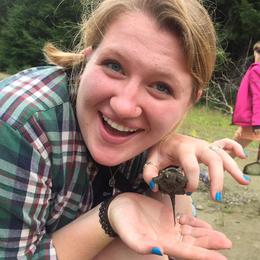This morning was the coldest morning we have had yet, but the warm sunshine kept us feeling good! As a team we worked on building another quinzhee (a snow shelter). We reminded each other that it is important to not only pile up snow, but to pack it down so that it will become secure, and stable. We had a team pile up the snow and other team pack it down with our hands, shovels, and even our whole bodies. As always, we let the pile to sit in the sun to pack down more on its own before shoveling it out at the end of the day.
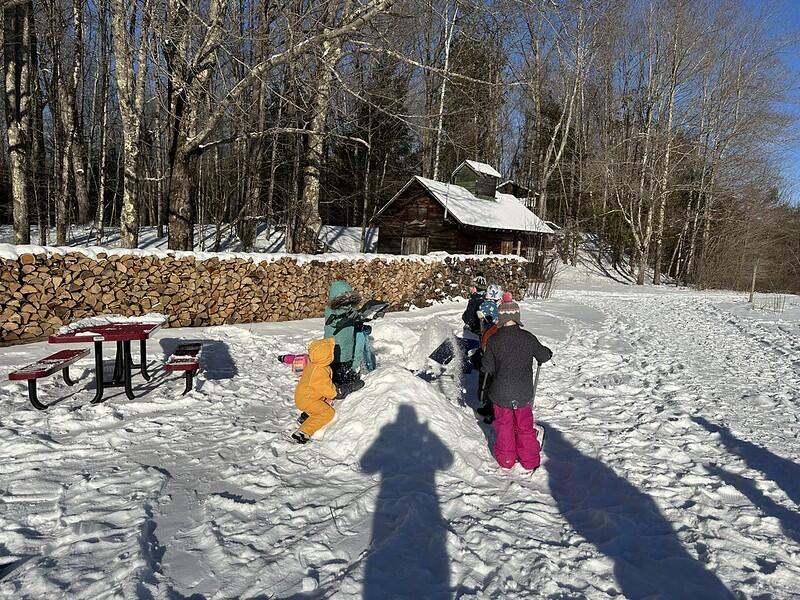
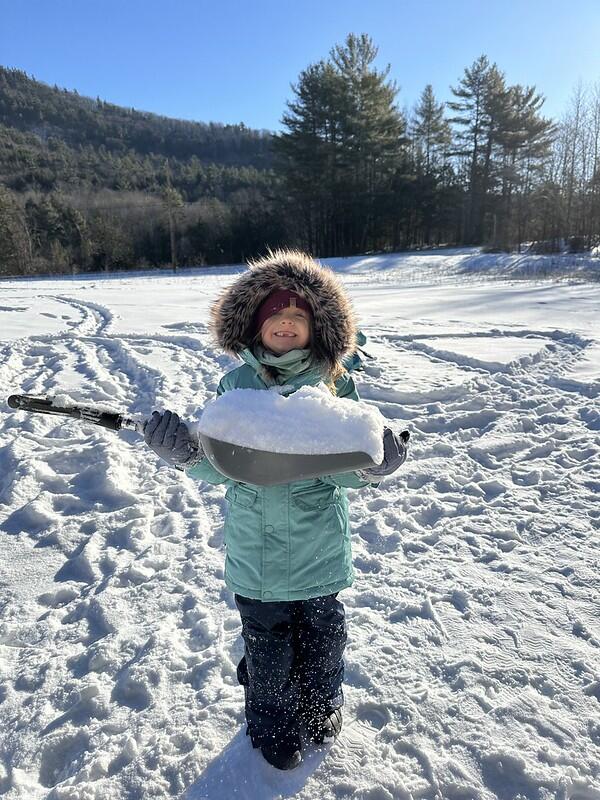
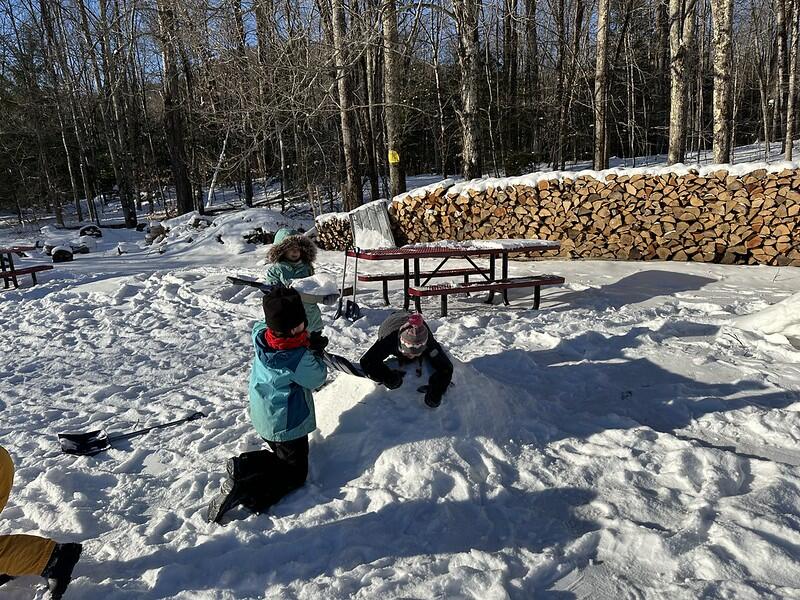
After morning meeting and snack we have a jampacked day ahead of us. First, we started on a hike up to the office. On our hike we wanted to stop by our water areas to see how they changed after the cold freezing weather we had. We stopped at the river and saw that some of it was frozen. We discussed why parts of the river were frozen while others had rushing moving water. We talked about the temperature of the water and how the snow and ice insulate the water and it stays relatively warm (42 degrees). Next, we stopped along the brook to see that this was more frozen because there was less water and it was a small space too. The ice was so incredible to look at, you could see the water moving under it too!
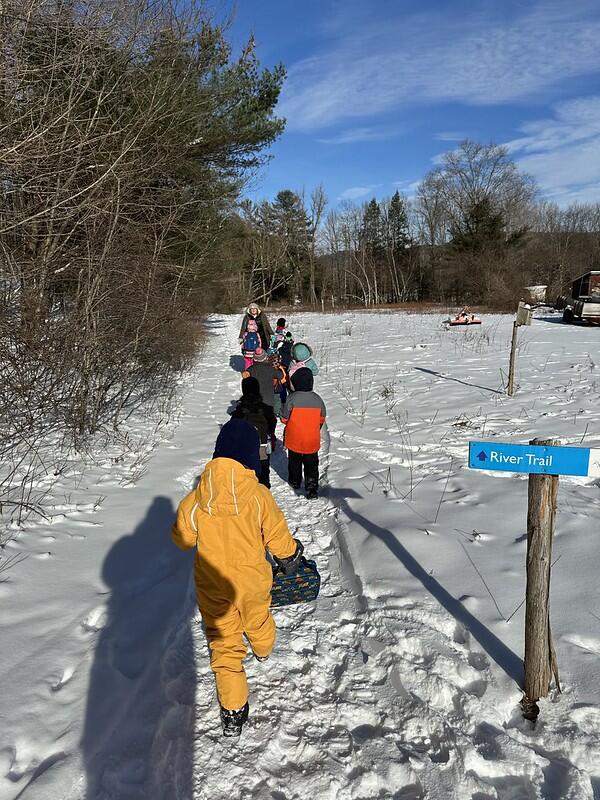
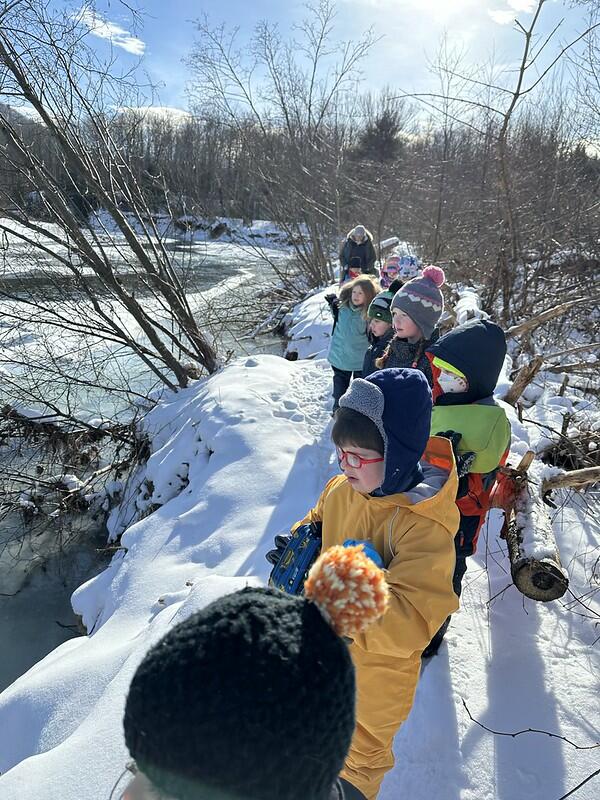
We made our way up to the office and spend some time to breath and break watching our birds at the feeders. We noticed that there were chickadees, we knew they were chickadees from their black top, white chest, browning wings, and we heard their song too. We saw other birds flying around that were chickadees but couldn’t see them long enough to notice what they looked like. We also helped fill up the feeders with black oil sunflower seed. This is the most common food for birds in the winter. You can use other seed, but black oil sunflower seed is good for the largest variety of birds. Once we felt energized again, we had a blast sledding in the yard. We started to feel hungry to we had lunch in the yard in the sunshine as we read Bear Bottom.
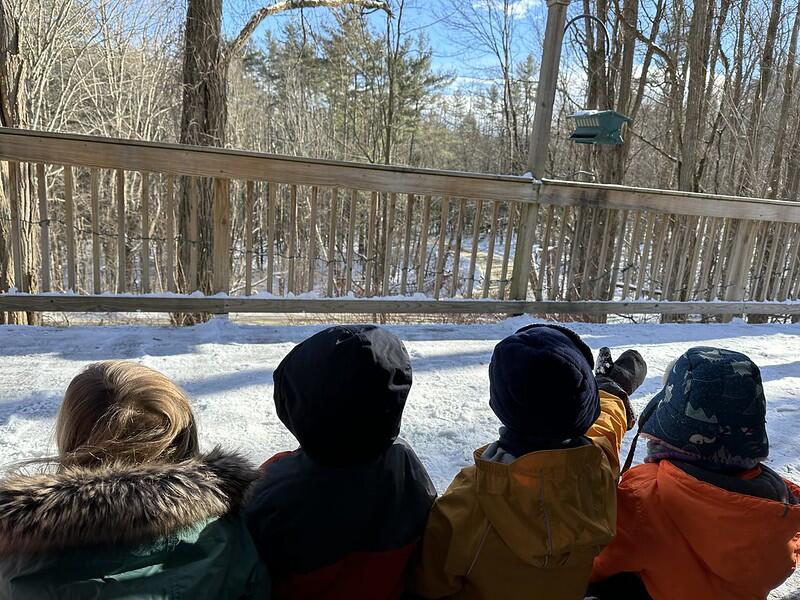
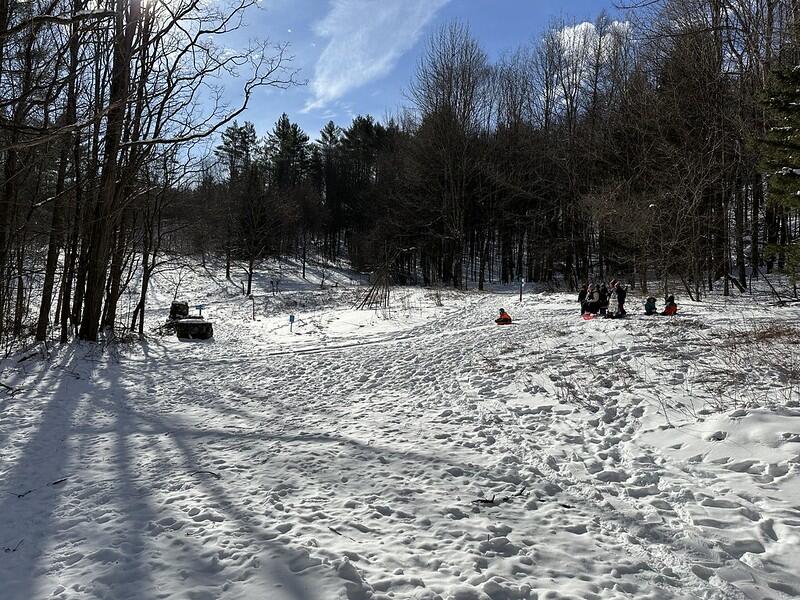
On our hike up and back down we noticed some great tracks! We saw some small ones, we think were mouse, and even a bird wing print too!
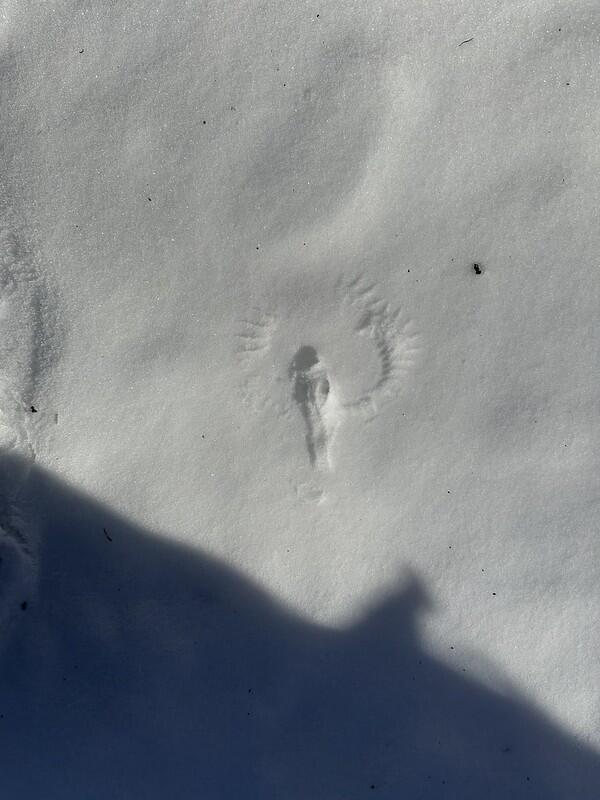
In the afternoon we explored Beaver Pond and made an ice-skating rink! The ice was thick enough for us to play and explore on, we went all the way across which was incredible! We drew in the snow, build paths, and experience a part of the pond so few people get to explore.
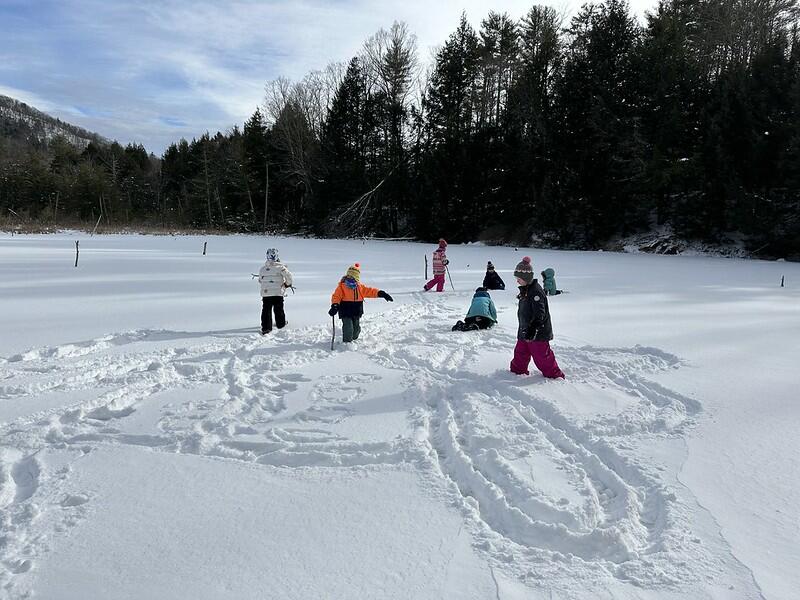
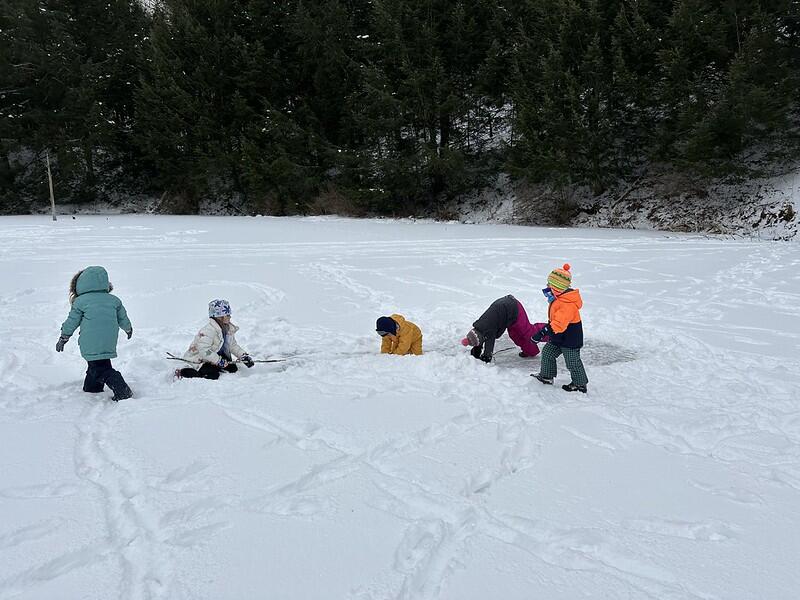
Our day ended with digging out our quinzhee and sharing our favorite part of the day!

